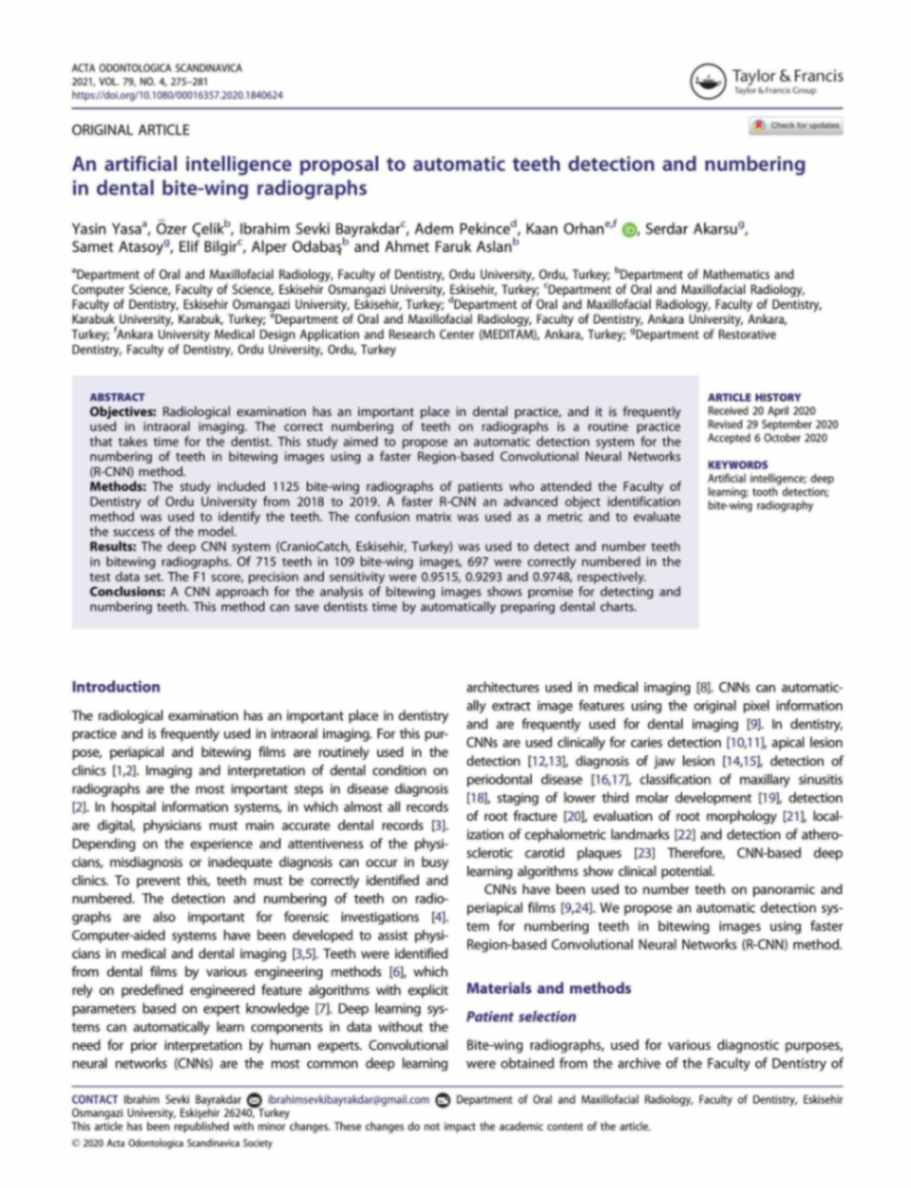A U-Net Approach to Apical Lesion Segmentation onPanoramic Radiographs
- Introduction:
- Discusses the use of artificial intelligence (AI) algorithms in medical imaging, specifically in dental radiology.
- Highlights the advantages of panoramic radiography over other imaging techniques in terms of radiation dose and patient comfort.
- Materials and Methods:
- Radiographic Data Preparation:
- Describes the source of the 470 panoramic radiographs used in the study.
- Mentions the exclusion criteria for images with artifacts.
- Image Annotation:
- Details the process of ground truth image annotation by experienced dental radiologists.
- Deep CNN Architecture:
- Explains the use of a U-Net model implemented with PyTorch for semantic segmentation tasks.
- Provides an overview of the U-Net architecture with encoding and decoding sections, convolutional filters, and skip connections.
- Radiographic Data Preparation:
- Model Pipeline:
- Model Development:
- Utilizes the PyTorch library for model development in Python.
- Describes the AI model (CranioCatch) developed for automatic segmentation of apical lesions on panoramic radiographs.
- Data Split and Augmentation:
- Divides the 470 panoramic radiographs into training, validation, and test groups.
- Augments the training data set using horizontal and vertical flips.
- Cropping (Preprocessing Step):
- Divides all images into four parts for further processing.
- Model Development:
- Results:
- Segmentation Performance:
- Reports the segmentation results of the AI model on the test data set.
- Provides sensitivity, precision, and F1-score values for the segmentation of periapical lesions.
- Segmentation Performance:
- Discussion:
- Clinical Implications:
- Discusses the potential of AI systems to aid in the assessment of periapical pathology based on panoramic radiographs.
- Comparison with Other Studies:
- Mentions the success of deep learning networks, including CNNs, in medical imaging applications.
- Clinical Implications:
- Conclusion:
- Summarizes the study's findings regarding the U-Net approach for apical lesion segmentation on panoramic radiographs.
I Want to Write a Scientific Research Project
CranioCatch is a global leader in dental medical technology that improves oral care in the field of dentistry. With AI-supported clinical, educational, and labeling solutions, we provide significant improvements in the diagnosis and treatment of dental diseases using contemporary approaches in advanced machine learning technology.
CranioCatch serves thousands of patients with dental health issues worldwide every day with its innovative technologies. That’s why we eagerly look forward to meeting our valued dentists who wish to work in the field of 'Scientific Research in Dentistry'.



 Contact Us
Contact Us

